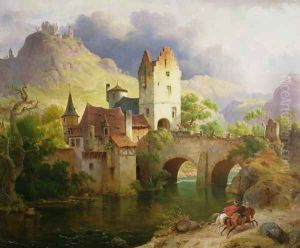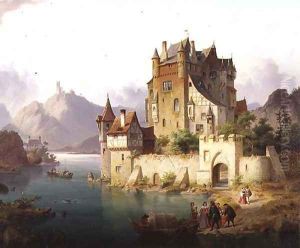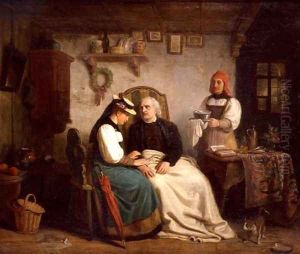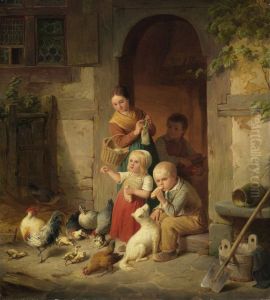Heinrich von Rustige Paintings
Heinrich von Rustige was a German painter born on August 9, 1810, in Münster, Germany. His artistic journey is a reflection of the 19th-century European art scene, marked by the transition from Romanticism to Realism. Von Rustige's work, deeply influenced by the historical and cultural upheavals of his time, navigates the realms of landscape, portrait, and historical painting, showcasing a versatility and depth that underscore his significance in the German art world.
Von Rustige embarked on his artistic education at the Academy of Fine Arts Munich, where he was profoundly influenced by the teachings of Peter von Cornelius, one of the leading figures of German Romanticism. This early exposure laid the groundwork for von Rustige's development as an artist, imbuing his work with the romantic ideals of emotion, nature, and historical grandeur. However, as his career progressed, von Rustige began to incorporate elements of Realism into his paintings, reflecting a broader shift in the European art scene towards depicting life with greater accuracy and detail.
Throughout his career, von Rustige was a prolific artist, contributing significantly to the genres of landscape and historical painting. His landscapes, often inspired by the German countryside, are celebrated for their detailed representation of nature and their ability to evoke a sense of tranquility and timelessness. In contrast, his historical paintings are noted for their dramatic intensity and meticulous attention to detail, bringing to life pivotal moments in German and European history.
Von Rustige's contributions to the art world were recognized with various honors, and his works found their way into numerous collections and prestigious exhibitions throughout Europe. Despite the changing artistic trends of the 19th century, von Rustige remained true to his vision, blending romantic sensibilities with a realist approach to craft works that were both evocative and grounded in the world around him.
Heinrich von Rustige passed away on September 2, 1906, in Düsseldorf, leaving behind a legacy that continues to be celebrated for its artistic merit and historical significance. His paintings, preserved in museums and collections across Germany and beyond, serve as a testament to his skill, creativity, and enduring impact on the world of art.



